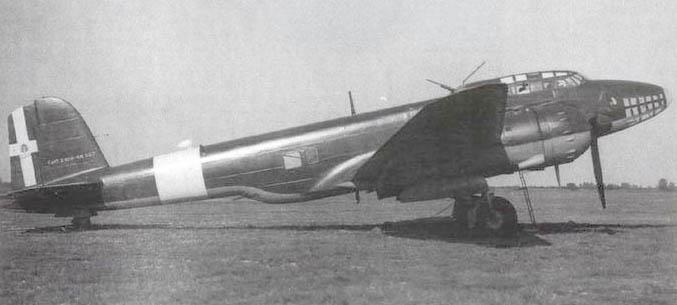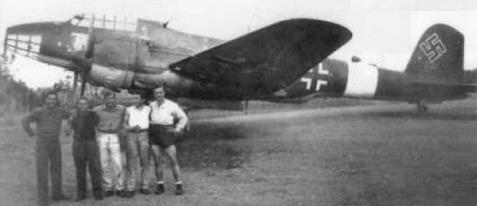IThe aircraft, in its definitive form (as the Leone I) was a two-engine medium bomber, with a single tail, retractable undercarriage, and metallic structure. It had duralumin structure, a skin of light alloy, and a crew of four or five. The contours of the slim fuselage were designed for aerodynamic benefit. As with the Z.1007, the two pilots were in tandem, not side-by-side. Only the first pilot had a complete set of controls, while the copilot had limited visibility and only few instruments.
Its wing was straight-tapered, with rounded wingtips. The low wing incorporated two structural spars. The wing was metal-covered forward and fabric-covered aft. In spite of efforts to reduce the airframe weight, the empty weight of the prototype was comparable to the three-engine Z.1007.
Engines for the Z.1018 prototype were Piaggio P.XII-RC.35 air-cooled radials with 18 cylinders in two rows, rated at 895 kW (1,200 hp) for takeoff and 1,007 kW (1,350 hp) at 3,500 m altitude, at 2,050 rpm. Their dry weight was 930 kg (940 kg with oil), and they used 87 octane fuel. Propellers were metal three-blade variable-pitch Alfa Romeos.
Using this powerplant, CANT engineers calculated a top speed for the Z.1018 of 524 km/h at 4,500 m , with a takeoff run of 354 m , landing run of 462 m , and a climb to 4,000 m in 7 minutes 32 seconds (14 minutes 4 seconds to 6,000 m).
Design fuel capacity was 3,300 L in wing-mounted self-sealing fuel tanks. A possible modification was offered - a 500 L auxiliary fuel tank in the aft fuselage. Calculated endurance with standard tanks was about three hours, for 1,335 km range (using calculated maximum cruise speed). Endurance and range using economical cruise speeds are not available, but should have been better.
Proposed armament was twelve 100 kg bombs carried in the internal bomb bay. Wing hardpoints were provided capable of carrying 1,000 kg each. Two such external weapons could be carried, since the calculated payload (difference between empty weight and maximum operating weight) was 2,700 kg .
This calculated Z.1018 payload was barely enough for takeoff with full fuel and crew (2,800 kg), so it would not allow for any weapon load. A possible explanation is that the prototype was never flight-tested at its maximum capacity including weapon load.
Defensive armament for the Z.1018 consisted of four machine-guns:
•Breda-SAFAT (12.7 mm) in a Caproni-Lanciani belly turret;
•Scotti (12.7 mm) in an upper turret;
•Two Breda-SAFAT (7.7 mm) in fuselage side openings.
In addition, a fixed Breda-SAFAT (7.7 mm machine gun was mounted in the right wing, to be used for ground attack or straight-ahead defense. Ammunition to be provided was 350 rpg for each 12.7 mm gun and 500 rounds for each 7.7 mm gun. The upper turret was troublesome to install, and was finally mounted in a partially retracted position, which prevented a full field of fire.
The added weight of these guns adversely impacted the aircraft's performance. In addition, in retrospect the inclusion of a fixed forward-firing gun on a fast bomber appears to have been unnecessary.
Other systems on board were oxygen cylinders, radios, fire extinguishers and a photographic machine.
The first prototype flew on 9 October 1939. By the end of 1939, this aircraft had logged only 10 hours of flight, due to the unreliable engines. This was not sufficient to adequately evaluate the design, so in March 1940, the engines were replaced with Piaggio P.XII radial engines with three-blade propellers, with improved engine nacelles and propeller spinners.
On 25 May 1940, the prototype flew to Guidonia Montecelio for flight testing. The program was well behind the original schedule at that point; Regia had planned on placing the first 32 machines of the type in service by the end of 1939. Instead, Mario Stoppani and then Adriano Mantelli only flew the prototype. Stoppani made the delivery flight; Mantelli performed the flight tests. He reported an overall good impression, but not outstanding.
In December 1940, Regia Aeronautica specified that the Z.1018 be constructed with a double tail, but in May 1942 the requirement was changed back to the originally envisioned single tail. During this period, Regia also required the addition of dive brakes, increased armament, engine type changes and several other changes.
In the meantime, the test activity continued. The prototype was tested with the P.XII engines, and thanks to the absolute lack of military systems on board, it reached good speeds: at 4,200 m , the Z.1018 reached 514 km/h , equalling the Reggiane Re.2000 that was also undergoing flight evaluation there.
This aircraft had replaced the engines, but the Piaggio P.XII also suffered problems (in fact they were affected for years by many problems).
The verdict of Mantelli was not encouraging: the 'future bomber' Leone was not enough of an improvement to justify its replacing the CANT Z.1007, which was already in production for Regia Aereonautica. A measure of the delays which this program suffered is given by the fact that, in spite of pressures caused by the war being waged at that time, it had taken six months to complete the proof-of-concept aircraft, and a true prototype would still have to be constructed in order to verify the adequacy of the basic design.
Finally, the configuration of this aircraft was fixed, almost 2 years after its first-projected entry into service.
The final Z.1018 configuration is considered by some to be the most attractive of all the Italian aircraft., with its line so slim and well shaped.
With over a year of delay, 100 units of the CANT Z.1018 were finally ordered on 31 October 1940. However, on 26 December an additional order was placed for 10 units of pre-series aircraft. Due to problems arising from introduction of the all-metal airframe, the 10 pre-series aircraft were specified to be constructed of wood. It's a rare if not unique case that an aircraft was developed both with wooden and metallic structure, because among the other reasons, the necessity to account for the considerable differences between the weight and the strength of wood and metal structures. But Zappata was a specialist in wooden structures, and his Z.1007 was already in production with wood construction, so this eased the challenge.
In addition to this metal-to-wood conversion challenge, the continual government requests for modifications and improvements slowed production. Finally on 5 December 1941, the first (MM.24290) wooden pre-series unit made its maiden flight.
The two-year program delay meant that the pre-series aircraft were competing with upgraded versions of the CANT Z.1007, the "Ter". With continuous delays and change of priorities, 15 January 1942 saw the decision to produce only three bombers: the CANT Z.1007 and Z.1018, and the Piaggio P.108. At that time, General Bruno specified that the first 100 examples of the Z.1018 must be in service by 1943.
The first wooden example was tested for almost all of 1942, reaching a level speed 524 km/h despite the much heavier weight, mainly because of its improved aerodynamics. Due to the 2,013 kW (2,700 hp) installed power, it reached 6,000 m altitude in 14 minutes 4 seconds (lightly loaded).
Even so, the flight characteristics were not totally satisfactory. The aircraft was characterized by good ground handling, good takeoff and landing, but the pilot’s cockpit was set too low in the fuselage and at an excessive height from the ground, so the visibility was not good. In flight, the aircraft was quite stable, but vibrations occurred at high speed in turbulence, and control response was considered sluggish. Also, the first series example was affected by several problems of tail vibration and even poorer control response. The maximum speed of the series examples was inferior to the prototype. Several of the pre-series aircraft suffered landing accidents, which although not serious further delayed the project's development.
Other experiments were made with several Z.1018s. Yet by 10 May 1943, when Tunis was falling to Allied forces and the African war was almost over (13 May), only 10 units had been completed, several of which were incomplete or had been damaged during testing (including testing for torpedo carriage and launch).
On 7 July 1943, the Italian 262 squadron, 107th Group, 47th Wing, received the first two pre-series aircraft to be placed in service, and later received another pre-series aircraft that had been damaged by a landing accident during flight testing. By September 1943, only one pre-series Z.1018 aircraft was still in service, and no Z.1018 had seen combat.
On 8 August 1943, a pre-series Z.1018 crashed near Perugia, killing its pilot, Enzo Bravi.
Meanwhile, the first metallic Z.1018s were completed. The first unit (MM.507) was completed on 22 September 1942, but the lack of engines and other equipment hampered the effort to complete the first order of 100 units. The first two metal units completed were interesting: MM.24824 was the heavy nightfighter version, and MM.24826 was the torpedo version. MM.24824 was exceptionally well armed, with four 20 mm MG 151 (800 rpg) and four Breda 12.7 mm/.5 in (1,400 rpg) in the nose and the wings. Also radar was specified for this aircraft, the German FuG 202. Italians, meanwhile, managed to produce the Argo, a radar capable of locking onto naval targets, and an aircraft version, the Vespa (or Arghetto), smaller but still capable of being used to hunt naval targets. The final result of this effort was the Lepre, an air interceptor radar, the ultimate radar developed in Italy during the war. None of them was fitted on the Z.1018 night fighter, which never was completely outfitted for combat.
MM.24824 had a powerful weaponry, both in firepower and number of rounds carried. This was a great improvement compared to the early Italian fighters, but this was a big and heavy aircraft, a medium bomber, so the space and payload was not a problem, just as with the German Dornier Do 217, one of the similar aircraft developed in the rest of the world, and which had been sent to Regia Aereonautica in small numbers. After a brief evaluation in a squadron, MM.24824 was caught by surprise by the armistice in CRDA and captured by Germans, but was not employed and didn't survive the war.
The Germans took control of all Italian industries in central and north Italy.
The Germans allowed both CRDA and Breda to continue the production for 28 examples each, out of 200 ordered in two series. CRDA was destroyed by allied bombings and so, its final result was: 95 examples were committed to the production lines, 28 of them were authorized to be completed, two were completed and taken by Germans, then sent to Germany where they were lost in unknown conditions. Four others were destroyed by bombings and the rest of all the machines were demolished as Germans ordered.
Total built, around 17 (10 wooden-made). This modest amount was the only result of the programs made by Regia Aeronautica to upgrade her bomber fleet.
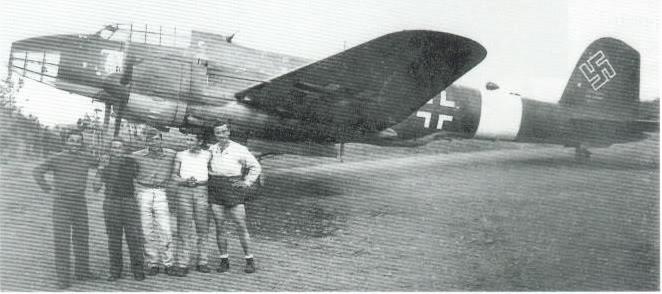
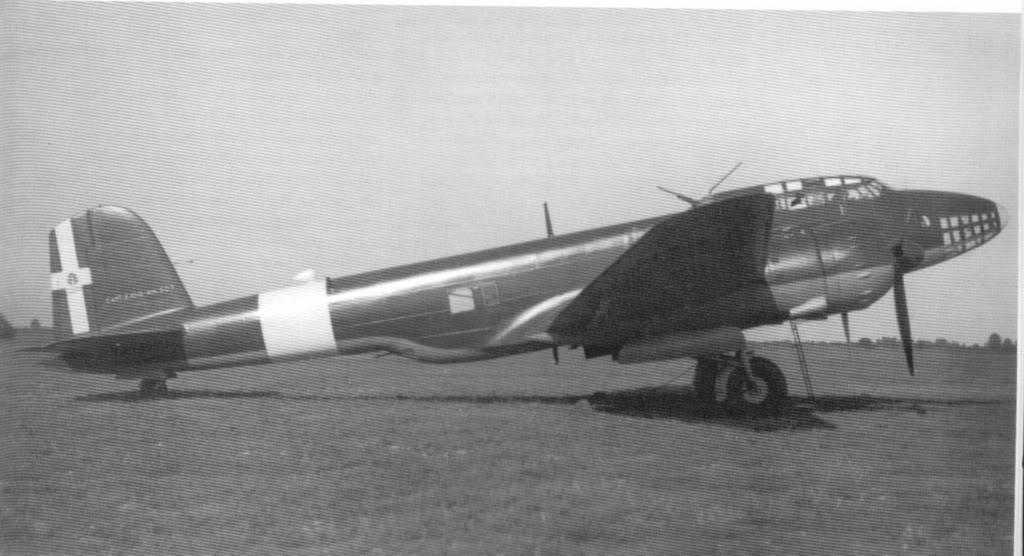
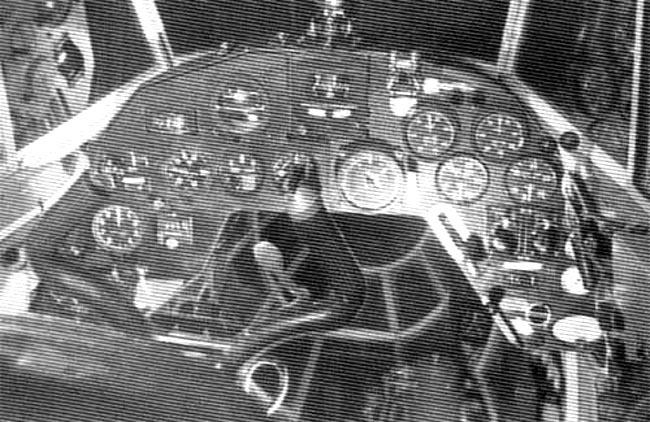
| Type |
4/5 seat medium bomber |
| Engine |
2 Piaggio P.XII RC35 |
| Dimensions |
Length 17,6 m, height 6,1 m, span 22,5 m, wing area 63,1 m2 |
| Weights |
Empty 8800 kg, max. take off 11500 kg |
| Performance |
Max. speed 524 km/h, stalling speed 140 km/h, climb to 4000 m 7,34 min, to 6000 m 14,04 min., service ceiling 7250 m, range 1335 km |
| Armament |
2x12,7+2x7,7 mm machine guns |
| Type |
Werk.Nr |
Registration |
History |
|
|
MM.24824 |
|
|
|
MM 24827 |
|
|
|
MM 24828 |
|
|
|
MM 24831 |
|
|
|
MM 24833 |
|
|
|
MM 24835 |
|




